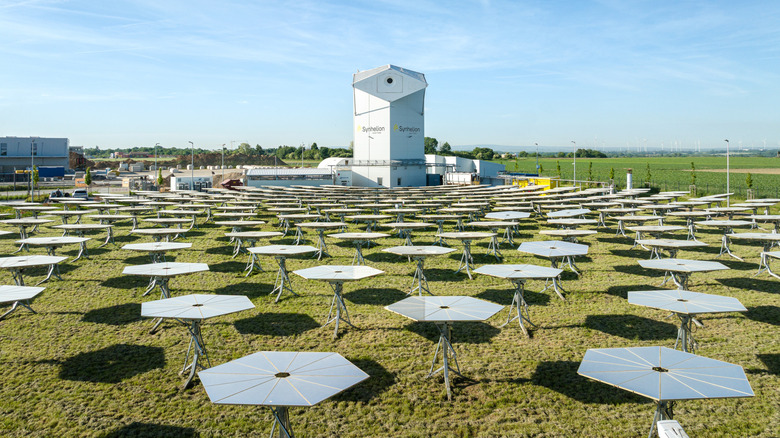What You Should Know About The World's First Solar-Fueled Harley-Davidson Motorcycle
The Harley-Davidson name has been around for over a century, and it has enjoyed such longevity for a reason. Throughout its decades at the forefront of the motorcycle world, the company has continued to innovate to a changing market. There are now several different Harley-Davidson frame types designed to meet the needs of many different styles of riding. You can also customize your Harley, as well as choose from various types of engines. Now, the motorcycle brand has become the first to use a new form of fuel that is made with solar energy.
In May 2025, a company called Synhelion revealed that it had successfully fueled a Harley-Davidson motorcycle with an energy source known as solar fuel. Ridden by ETH Zurich professor Aldo Steinfeld, who has been studying solar fuel for more than a decade, the motorcycle operated much like one powered by normal fuel. It was noted that the motorcycle didn't require any modifications to use this new solar fuel, indicating that it shouldn't be necessary to retrofit current vehicles to accommodate it as it potentially becomes more widespread. With all of that said, what exactly is solar fuel?
Solar fuel is made from biomass, water, and sunlight
When you see the word "solar-powered," you likely imagine solar panels soaking up energy from the sun to power a device of some kind. Yet the Harley itself doesn't have any solar-powered technology on it. Instead, it is using solar-powered fuel. This is created when the energy of the sun drives a chemical reaction between some kind of biomass, like agricultural waste, and water. In this process, these substances are converted into liquid hydrocarbons. According to Synhelion, this thermochemical reaction is able to turn the aforementioned concoction into sustainable aviation fuel, gasoline, and diesel, so it goes without saying that this tech could be revolutionary in multiple industries.
Synhelion also notes that solar fuel is nearly carbon-dioxide-neutral. This means that, as it's burned in a car, truck, or Harley, it will only release roughly as much carbon dioxide as it took to produce it, without emitting CO₂ when in use. This could be appealing in a market that is shifting toward electric vehicles and other means of transportation that emit less carbon dioxide in an attempt to mitigate the effects of climate change. Solar fuel isn't the strangest renewable energy source being explored today, but it's making headlines all the same. After this historic Harley-Davidson ride, hopes are high that solar fuel could expand its reach in the near future.
Solar fuel could have many applications beyond this Harley ride
There's no denying the historical significance of the solar fuel-powered Harley-Davidson ride. It cemented the viability of this alternative fuel source and provided strong evidence that it can be used safely and effectively on existing machinery. With that said, it's just the first step in Synhelion's wider solar fuel plan.
With the success of professor Aldo Steinfeld's Harley trip, Synhelion is moving forward with more real-world applications. For example, in early August 2025, Swiss International Air Lines saw 190 liters of solar fuel integrated into Jet A-1 aviation fuel for flight use. Synhelion also successfully used the fuel in a 1985 Audi Sport Quattro, taking it for a rigorous drive through the Swiss Alps to prove the fuel's capabilities. It stands to reason that so long as Synhelion is able to keep proving its solar fuel is on par with traditional gasoline, it could soon become more commonplace. Just as renewable energy can transform your home, it may be able to transform your commute in the form of solar fuel. Synhelion's work on solar fuel is a game-changer, and the Harley-Davidson name will sit along side it in the history books.


